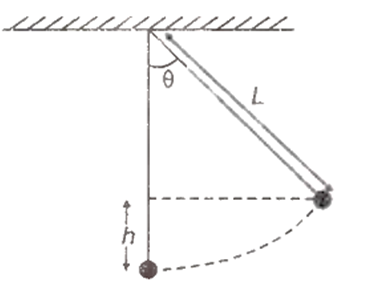 Multiple Choice Questions
Multiple Choice QuestionsTwo identical springs, each of spring constant K, are connected first series and then in parallel. A mass M is suspended from them. The ratio of the frequencies of vertical oscillations will be
2 : 1
1 : 1
1 : 2
4 : 1
A particle starts SHM from the mean position. Its amplitude is a and total energy E. At one instant its kinetic energy is . Its displacement at that instant is
B.
A particle executes linear simple harmonic motion with an amplitude of 2 cm. When the particle is at 1 cm from the mean position the magnitude of its velocity is equal to that of its acceleration. Then its time period in second is
A particle of mass m moves along x axis with a potential energy represented by where a and b are positive constants. Its initial velocity (v0) is zero when x is zero. It will execute an SHM with a frequency determined by the value of
b alone
a and b
b and m
a, b and m
A simple penduium with bob of mass m and conducting wire of length L swings under gravity through an angle 2θ. The earth's magnetic field component in the direction perpendicular to swing is B. Maximum potential difference induced across the pendulum is

In a simple pendulum the breaking strength of the string is double the weight of the bob. The bob is released from rest when the string is horizontal. The string breaks when it makes an angle θ with the vertical. Then
θ = 30°
θ = 45°
θ = cos-1 (2/3)
θ = cos-1 (1/3)
An object of mass m falls on to a spring of constant k from h. Then the spring undergoes compression by a length a. The maximum compression x is given by the equation
mgh = − kx
A heavy brass sphere is hung from a weightless inelastic spring and as a simple pendulum its time period of oscillation is T. When the sphere is immersed in a non-viscous liquid of density 1/10 that of brass, it will act as a simple pendulum of period
T
